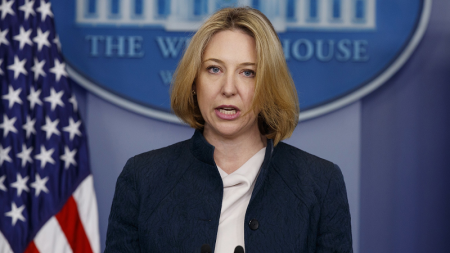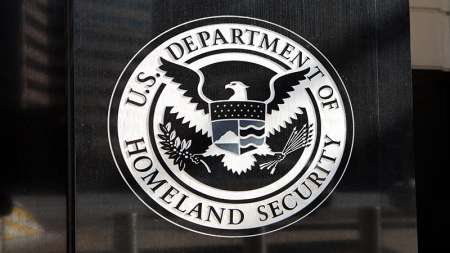The unique role of the Department of Homeland Security (DHS) in leading cybersecurity efforts for the entire civilian Federal enterprise presents a unique challenge and one that requires the government to rethink its understanding of risk, DHS’ Jeanette Manfra said Thursday at MeriTalk’s Akamai Government Forum. […]
Welcome to MeriTalk News Briefs, where we bring you all the day’s action that didn’t quite make the headlines. No need to shout about ‘em, but we do feel that they merit talk. […]
It’s probably not a shocking revelation to learn that Federal IT managers are less than happy with their agency’s IT infrastructure. Their biggest gripes, according to a recent MeriTalk survey are that it’s 1) expensive, 2) difficult to manage, and 3) inefficient. Small wonder then that the same survey found that nearly all of those who participated—92 percent of 150 Federal IT managers—were frustrated with the state of their infrastructure. […]
Today the Department of Homeland Security (DHS) and the Federal Bureau of Investigation (FBI) released a joint Technical Alert (TA) identifying two families of malware–dubbed Joanap and Brambul–used by the North Korean government. […]
Federal government agencies must work on improving mobile device security, as people are increasingly attached to their devices and attackers can wield a variety of new threats that can expose agencies’ passwords, personal information and networks, industry officials said this week. […]
It’s only traditional for heroes to ride off into the sunset–and, appropriate that the sun sets in the West. Dr. Barry West, senior advisor and senior accountable official for risk management at the Department of Homeland Security (DHS), announced plans to hang up his government IT spurs the end of this month. […]
The Department of Homeland Security (DHS) today unveiled a new five-pronged strategy aimed at managing “national cyber risk,” and in particular, U.S. “cyber and critical infrastructure security.” […]
Tenable announced that it recently discovered a critical remote code execution vulnerability in two Schneider Electric applications used in manufacturing, oil and gas, water, automation, and wind and solar power facilities. […]
A gathering of crows is called a murder. A bunch of kangaroos is called a mob. And a gathering of IGs is–no, not a nuisance–it’s called CIGIE–the Council of Inspectors General on Integrity and Efficiency. And, CIGIE’s annual Top Management and Performance Challenges–TPMC report–boiled down IG reports from 61 different agencies–and leads with IT and security management issues across the government. […]
As government cyber warriors recover from their red-eye journey back from the RSA conference, there’s news on the leadership progression at the top cyber operational position in government. The Department of Homeland Security (DHS) named Paul Beckman as the DHS HQ CISO. Formerly deputy CISO for DHS HQ, Beckman replaces, who recently retired from government service. […]
At the RSA Cybersecurity Conference in San Francisco, Department of Homeland Security (DHS) Secretary Kirstjen Nielsen made it clear that the United States has “a full spectrum of response options” to defend against cyber attacks and hacks. […]
The Trump Administration’s proposed $4.4 trillion budget for FY2019 would add some money to the cybersecurity pot, supporting ongoing programs and manpower levels, while cutting back on cybersecurity research and redistributing where the research money goes. Administration budget requests are largely political documents whose numbers won’t hold up once Congress gets done with making the sausage, but they do reflect White House priorities. […]
According to Agari, an email security provider, one in 10 emails ending in .gov are fraudulent. And government systems are the second-most popular target of phishing attacks among all vertical markets, behind only healthcare. […]
The Report to the President on Federal IT Modernization recommends modernizing the Trusted Internet Connections (TIC) program, which is critical to the Federal government’s broader digital transformation strategy. By the end of this month, the report calls for the Office of Management and Budget (OMB) to conduct data calls to agencies to discuss their cloud migration projects, and identify any delays caused by current TIC policy. And, by March 2, OMB will share a “preliminary update to the TIC policy,” and launch select pilot projects to test the new TIC requirements. […]
Last year brought a great deal of change to Washington, D.C., from a new administration moving into the White House to D.C. United building a new stadium. As 2018 starts up with seemingly limitless IT opportunities ahead, MeriTalk takes a look back on the top Federal IT stories from 2017. […]
North Korea’s persistent efforts on nuclear weapons development and some loose talk about red buttons have raised new fears internationally about the possibilities of nuclear conflict. At home, government agencies also are addressing the questions about what to do in the case of a nuclear detonation. The Centers for Disease Control and Prevention (CDC), for example, will hold one of its Public Health Grand Round teaching sessions Jan. 16 on how medical professionals should respond–and although the event has been planned for months, it’s timing suddenly seems to be on the mark. […]
The White House wants to clear the way for Federal agencies to adopt commercial cloud computing, even if that means tweaking acquisition rules to help them get there. […]
With rapid growth in smart devices, exploding data volumes, and the shift to the cloud, it is becoming more and more challenging to protect critical systems and information. Government and industry leaders convened at the Symantec Government Symposium in Washington, D.C. on Tuesday to discuss these complex challenges and the solutions needed to address them. […]
Kevin Cox is Jon Snow in the war against cyber threats–for the cyber night is here and full of terrors. And, winter isn’t coming–it’s already here. As Continuous Diagnostics and Mitigation (CDM) rounds out phases I and II, our government needs automation, artificial intelligence (AI) and machine learning (ML) to hold back the ugly cyber hoards. AI, ML, and cloud are the dragons, dragon glass, and Valyrian steel that the Department of Homeland Security (DHS) needs to combat the hacking white walkers. Okay, so how to separate fact from fairytale? […]
The Government Accountability Office found that 62 percent of major information technology software development investments were certified by the agency chief information officer for using adequate incremental development in fiscal year 2017. However, a number of responses for the remaining investments were incorrectly reported due to agency error. […]
In the event of a cyberattack, it’s important for information about the attack to be shared with the public in order to prevent further problems. Jeanette Manfra, assistant secretary for the Office of Cybersecurity and Communications at the Department of Homeland Security, said that the agency shares timely, accurate information with its partners and constituents so that they can take proper action to protect themselves. […]
The Continuous Diagnostics and Mitigation Program last week held its first data exchange between the Federal CDM dashboard and an agency dashboard. All of the CFO Federal agencies have agency dashboards to comply with the CDM program, and the Federal dashboard is in production. […]
Sen. Sheldon Whitehouse, D-R.I., said that he is concerned about the Trump administration’s widespread adoption of the NIST Cybersecurity Framework. “The NIST Framework has never been adequately validated,” he said, adding that he wonders whether agencies have accepted it because it’s effective or because “compliance demands so little effort.” […]
The White House announced that John Zangardi will serve as the new chief information officer for the Department of Homeland Security. Zangardi is currently serving as the acting CIO at the Department of Defense. He is leaving the DoD to replace Richard Staropoli, who unexpectedly resigned as DHS CIO in August. […]
The Department of Homeland Security’s deputy chief technology officer, Robert Palmer, announced plans to leave the agency, DHS confirmed. […]
The Department of Homeland Security published tips on Staying Safe in a ‘Smart’ World, which tells citizens how to navigate an environment full of the Internet of Things. […]
The Department of Homeland Security’s National Protection and Programs Directorate is standing up shared Continuous Diagnostics and Mitigation cloud security resources for small agencies. “That’s a rock star idea that’s coming to a government near you,” said Jeffrey Eisensmith, chief information security officer for DHS. […]
The Department of Homeland Security met with the Election Infrastructure Coordinating Council to discuss risk management tactics for election cybersecurity. The council is working to build partnerships to keep election systems secure. […]
The Department of Homeland Security announced a binding operational directive for agencies to increase their email and Web security. […]
The Department of Homeland Security plans next month to stand up a governmentwide dashboard that will give the agency visibility into all of the Federal networks. The dashboard is part of the Continuous Diagnostics and Mitigation program, which was supported in the White House’s IT Modernization report. […]



























